
 Reichsmarine vs
Reichsmarine vs  Royal Navy
Royal Navy
Probably the strangest naval battle of ww1
Lake Tanganyika was one of the largest watery surface in Africa, as much as deep and of dynamic hydrography. Fed by several rivers this largest African Great Lake could only be compared to the American great lakes. It was a production of the Albertine Rift, western part of the East African Rift. This was the second oldest freshwater lake in the world, and the second largest by volume, plus second deepest, and the scene of probably the strangest naval battle of ww1, preceded by an epic British expedition from South Africa and through Congo.
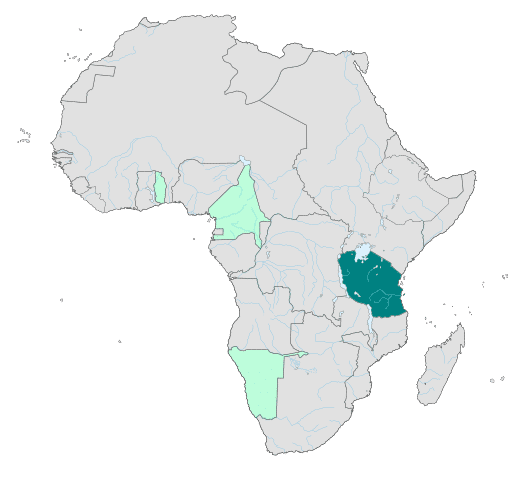
German East Africa map in 1913
For the control of East Africa
On the strategic level, it ensured control for the Royal Navy of this very large coastal area, bordering Belgian Congo (West) and German East Africa. The Germans confidently had three ships without rivals in the whole lake, including two gunboats and a converted freighter, as an auxiliary cruiser, under the orders of Graf (Count) Goetzen. Against all odds, an eccentric London RN staff pushpaper, Lieutenant Commander Geoffrey Spicer-Simson conveyed three dismantled crafts by rail, road and river to Albertville and mounted a surprise attack, leading to two battles seeing the end of the African dreams of Wilhelm II.
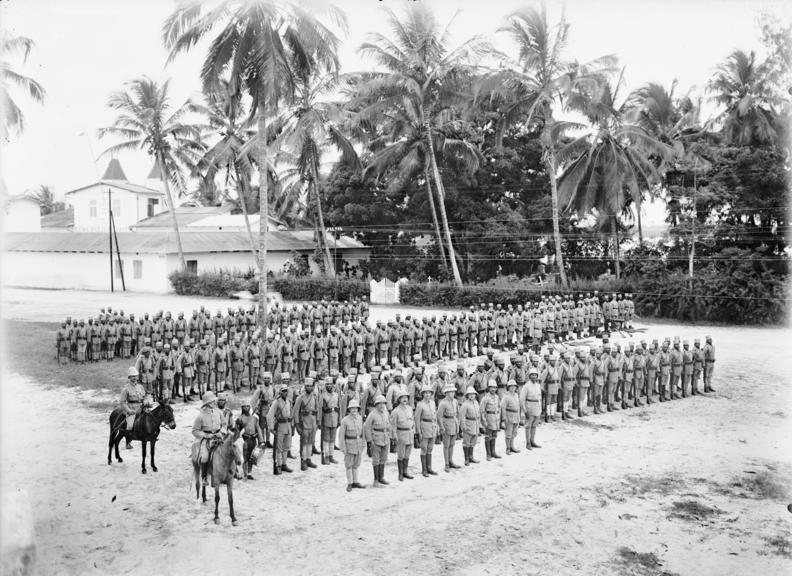
German Company of Askaris
German presence and strategic assets
Gustav Adolf Graf von Götzen, former governor of German East Africa, set up a network of bases and a fleet of three ships, armed, to control the lake, meaning being able to land forces at any point of the bordering countries for reinforcement, flanking and rear actions, in no time compared to land moves. This was a most crucial strategic asset for the domination of East Africa. Deutsch-Ostafrika was colonized from 1885 onwards, eventually culminating with a grab of 384,180 square miles (995,000 km2), areas now represented as Rwanda, Burundi and Tanzania. A seven and a half million was governed by just 5,300 Europeans, which can pick at will in just such large manpower to develop the colonies and raise armies. Protection laid in the hands of a small 260 men Schutztruppe, assisted by more than 2650 Africans and 2700 Landsturm, reservist settlers, a bit like the antiquity’s Kleruch.
Objectives in 1914 were highlighted by the press in a popular concept of MittleAfrika which mirrored the alliance between Central powers in Europe and consisted in invading Belgian Congo, by then one of the largest colonial landmass worldwide (See German claims map, 1917). This would allow to link German colonies in the East with those South-West and west. However the German colonial Army here suffered from the same limitations than opposite forces: Troops were merely seen as an occupation force with police duties, and although well-trained, infantry was only given second-grade armaments fit for repressing indigenous insurgency: Old, black-powder Model 1871 rifle, and a few also old field guns drawn from reserves scratched to the bottom. Moreover these forces were largely spread along many outposts throughout the territory, with poor communication lines, and certainly not capable of mounting a quick offensive in force.
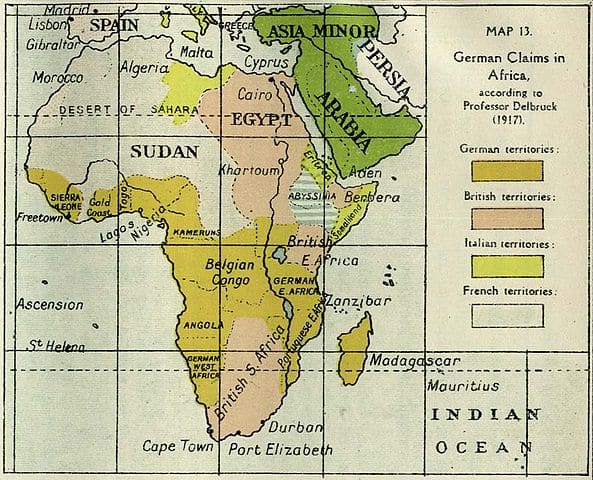
German claims in Africa, 1917
Gradually, objectives for newly-arrived Paul Von Lettow-Vorbeck in 1911-1912, were to pin down as many allied troops as possible, preventing them to join the fight in Europe. First objective was to threaten the British vital Uganda Railway, thus drawing a British invasion force in East Africa where he can play a defensive war, and even fight a guerrilla campaign. For the Belgian Congo led by Jules Renkin, German nearby presence was also conceived as a threat, but also as an opportunity to expand controlled territories, possibly traded with the Portuguese. A victory there would be also a strong propaganda asset in Belgium, to avenge the 1914 invasion. Soon enough the Germans would take control of the Tanganiyka, and the control of the seas would triggered a naval battle.

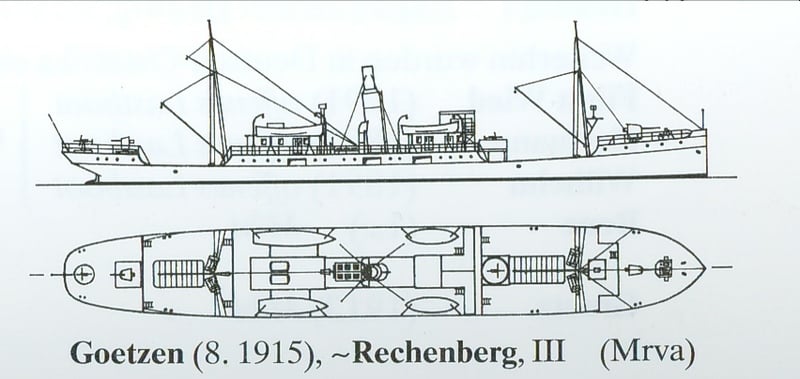
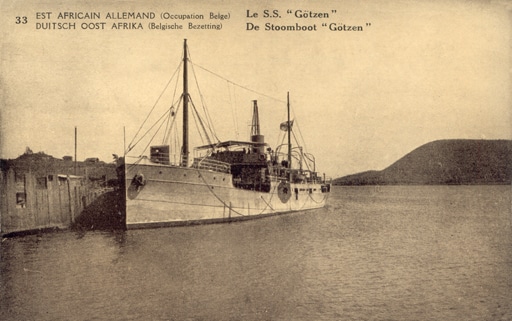
Graf Von Goëtzen, in construction, in harbour, and blueprint. She will soon receive a very potent 105 mm QF gun from SMS Königsberg.
African Naval Battle: Rufiji Delta
Although this is a subject for another post, here are the events that saw SMS Königsberg, originally in the Indian Ocean was soon in action at the Battle of Zanzibar, sinking the old protected cruiser HMS Pegasus, and retiring soon after into the Rufiji River delta. The British Cape Squadron soon enclosed it in a blocus perimeter. The squadron was lead by an old pre-dreadnought HMS Goliath two shallow-draught monitors (former Brazilian ordered ships) and the whole affair was quickly wrapped up on 11 July 1915. Guns of the Pegasus (“Peggy guns”) were salvaged for further operations, while the crew of Königsberg did the same with the 4.1 in (100 mm) guns, quickly carried out by Schutztruppe for other operations and widely used until the end of hostilities.
German raids on the west coast
Lake Tanganyika was this giant highway for German troops right on the Congo border, laying ostensibly on the map as a contention point in all reunion of the general staff over the African theater. To escort and carry troops the Germans soon armed a fleet of three steamers and two unarmed motor boats. One of these armed steamers, the 60 t Hedwig von Wissman was given four pom-pom guns and the 45 t Kingani. First, the Wissman raided the port of Lukuga on 22 August, damaging the sole Belgian armed steamer Alexandre Delcommune. She was sunk after another raid. In November 1914, this time, British African Lakes Corporation’s steamer Cecil Rhodes was also sunk. Following this the Germans launched another raid on northern Rhodesia, which was repelled, but it was followed by other raids on British possessions and the bombardments of Lukuga. The Belgians had indeed at least two armoured shore batteries at Lukunga (they still exist today) obtained from British 12-pounder guns, armed barges and other minor crafts. The fear of these German raids was such that the Belgian steamer Baron Dhanis, stored in parts on its berth and certainly larger than the Kingani or Wissman was never assembled. The Aforementioned 12-pounder guns were given by the British to the Belgians to arm this ship.
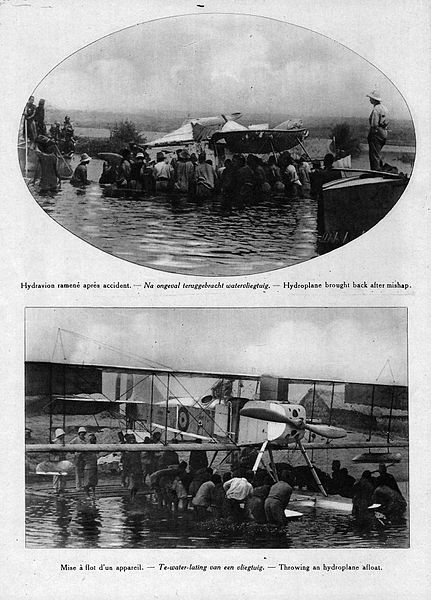
Belgian floatplanes on the lake
British preparations
Meanwhile in London in April 1915, John R. Lee met Sir Henry Jackson at the Admiralty to discuss options. He was a veteran of the Second Boer War and knew the Germans ships and locations on the Tanganyika. Intelligence bring them the prospect of seeing this time a ship big enough to carry troops in addition to an even superior firepower: The KMS Graf von Götzen was about to be launched in the fortified port of Kigoma. Previously she was built in parts at Meyer shipyard at Papenburg, disassembled and conveyed by rail in 5000 crates from Dar-es-Salaam to Kigoma to be assembled in secret. This was a 67 m ship long (220 ft), 1,575 tons dwarving any other vessel on the lake. In response, Lee devise a plan to carry there three motor gunboats that would outrun and outmaneuver the larger German ships. Moreover they had to carry a 6,400 m (7,000 yd) range guns that would just allow them to pummel the German Ships while staying out of harm. The advantage of a small ship also was to avoid them to be carried in parts and assembled, keeping the surprise and avoiding any German attack preventing their launch. The bold plan was approved, and given to Jackson’s junior Admiral David Gamble, while Lee gave the details to his subordinate, Lieutenant-Commander Geoffrey Spicer-Simson.
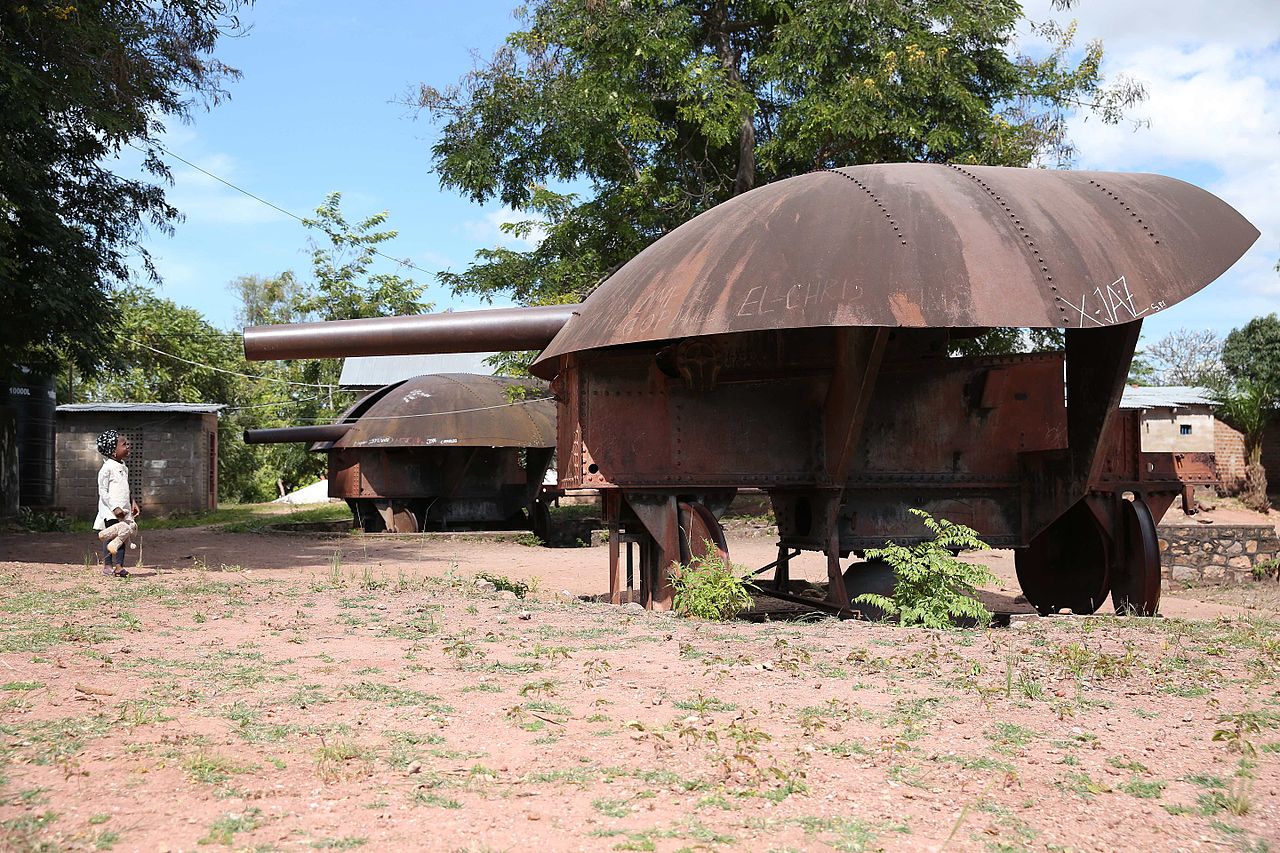
Belgian shore artillery, as of today.
About Geoffrey Spicer-Simson
Geoffrey Spicer-Simson was once described by Giles Folden as “a man court-martialled for wrecking his own ships, an inveterate liar and a wearer of skirts.“. He was unlikely to be given any command as being unable to pass this rank because of his repeated blunders and behaviour. He was very much put in the closet by the Admiralty, supervising the transfer of merchant seamen into the navy. However he was not devoid or resources, if not unconventional. In 1905 he indeed imagine that two destroyers would hold a steel cable between them to cut the periscopes or catch German submarines. In August 1914, his ship HMS Niger was torpedoed and sunk at Ramsgate while he was entertaining his guest on the shore. He was given by default (by the lack of officers) the command of a small ship to patrol the Gambia river. He was given this mission eventually and prepared to assemble a team of 27 men, plus the requisition of two motor boats previously built by Thornycroft for the Greek Government. When in Africa, Simson still went on with his eccentricities, wearing at all time a tiny skirt, and after his December victory, performing some sort of ritual bath twice a week in front of the locals that quickly saw in him a natural leader and went to revere him. Heavily tattooed, he was soon named “lord of the loincloth”.
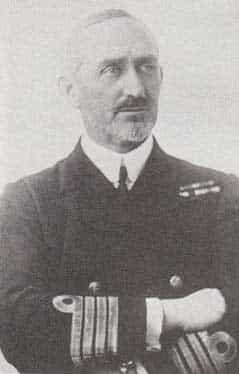
Geoffrey spicer-Simson
Simson’s preparations
The small motorboats were 40-foot-long (12 m), and were small enough to be carried by rail. They would have been named cat and dog but this was rejected by the Navy, but Simson then (as a test joke?) submitted Mimi and Toutou, which was accepted (these were popular surnames, even familiar bynames in French for cats and dogs). While crews from the Royal Naval Reserve were assembled, Simson started to modify the ships: They were given a Maxim guns and a 3-pounder Hotchkiss gun, and were tested on the Thames. Extra steel linings were also fitted to protect the petrol tanks. In june, trials went on, with fire training on fixed targets at speed. This showed the guns recoil was such they needed to be solidly bolted. When all was ready, both ships were loaded in SS Llanstephen Castle as well as everything that was to be carried by rail, properly packed in crates. This included special trailers designed to carry the ships by rail.
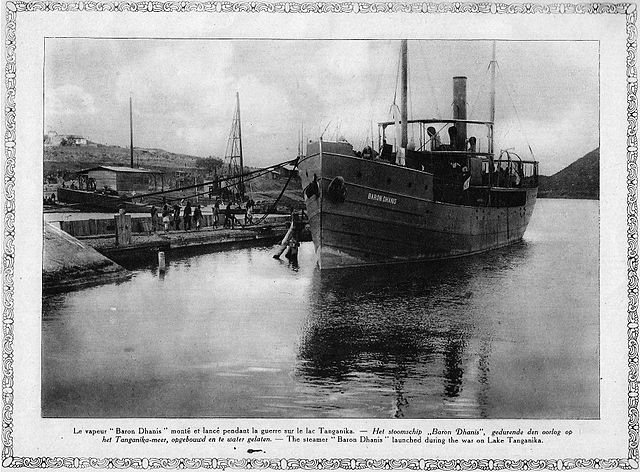
Belgian steamer Baron Dhanis
The expedition (June-October 1915)
At the same time the British freighter departed on June 15, British Intelligence has confirmed that previously on 8 June, German Graf von Götzen was launched and prepared for trials. During the trip through the Atlantic, towards South Africa (10,000 nautical miles or 16,000 km, 17 days at sea), Simson tried to prepare the land expedition, a 4,800 km (3,000 mi) trip inland, including deep jungle, waterfalls, hostile bugs and predators, and a 1,800 m mountain range. From the Cape, all was stored on a train bound to Elisabethville, reach on 26 July. From there, all had to be discharged and placed in a convoy of carts pulled by teams of oxen and steam tractors, for a bush trip 235 km (146 mi) long to the newt railway from Sankisia to Bukama. Then at Bukama, the whole materiel and ships had to be unloaded and again placed on carts to be carried voyage down the Lualaba River. The trip on this one was again an adventurous affair, the ships and barges running aground several times, then were loaded on a Belgian river steamer on Lake Kisale and ended they voyage at Kabalo on 22 October. From there, again, the whole convoy had to be loaded on rail, to reach the outskirts of the Belgian port of Lukuga. Upon arrival, an exhausted Simson had to confer with Belgian local Commandant Stinghlamber, and naval commander Goor.
First operations
Paradoxically, the German’s position on the lake has been just considerably strengthened again with the delivery of salvaged guns from KMS Konigsberg, recently sunk at the battle of Zanzibar. These 10.5 cm SK L/40 naval guns could be manned as the rest of the crews were drawn from the merchant fleet of the Deutsche Ost-Afrika Linie. One of these Schnelladekanone or QF guns was mounted on the Graf Goetzen, an unrivalled firepower, not match by the British 3-dpr at that stage.
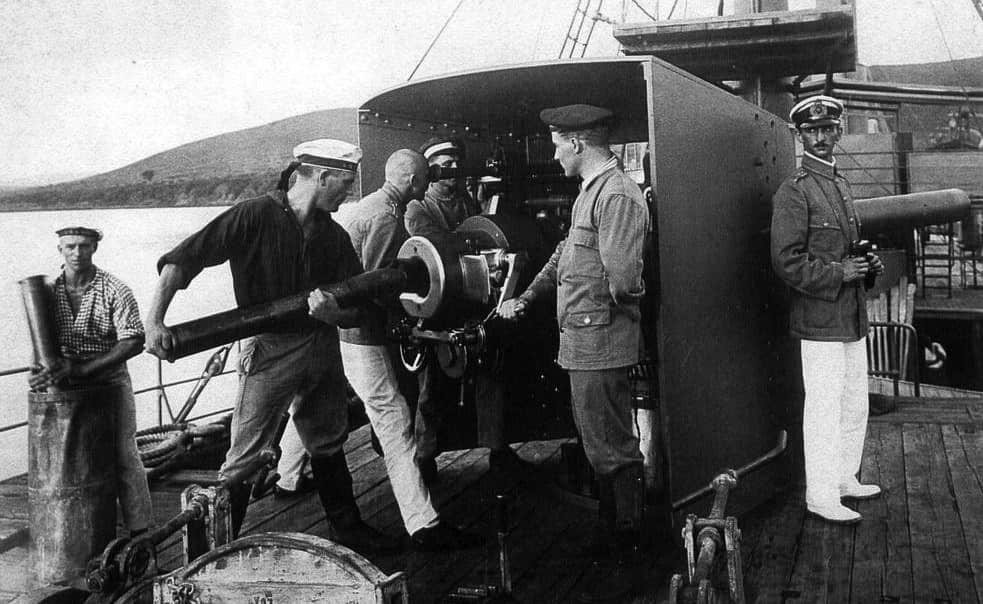
German crew loading a 10.5 cm QF gun from Königsberg mounted on the Goetzen.
Meanwhile, the British made preparations to operate the Mimi and Toutou. The Belgians, led by Goor, can only muster an unnamed two guns-barge of the “Dix-Tonne” type, Netta, a motor boat, and a whaler fitted with an outboard motor. Real firepower came from the shore batteries. Goor nevertheless hoped to have the Baron Dhanis in commission soon, and plan to recover and repair the Alexandre Delcommune as soon as possible. But their major asset was a pair of recently arrived and mounted floatplanes, which can be used both for observation and strafing. The Germans do not have any significant AA at that time.
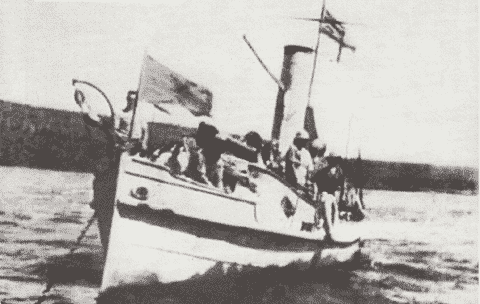
HMS Fifi, ex-Kingani
Seeking to know the work advancement level on the Baron Dhanis, a potential threat for the Götzen if she was caught in port off guard, German commander Zimmer ordered the Kingani (cdr. Rosenthal) to sail for a recoignition of Lukunga. Rosenthal arrived and saw the new harbour at Kalemie where the British motor boats were just been prepared. She returned on 1st December, but was this time spotted and rebuffed by the Belgian’s shore batteries. Undaunted, Rosenthal came back at night, going as far as swimming himself to see the Belgian slipways close and personal, then ventured inland to observe Spicer-Simson’s camp. Not able to find back the Kingani while in the dark, he was caught at dawn by a Belgian sentinel and made prisoner. He however would be able to send a message to Zimmer written in urine via a contact, not reaching him however for monthes. Meanwhile the British struck.
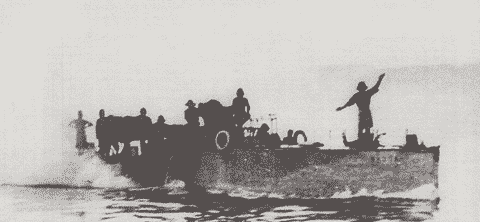
Simson on board the Netta.
Mimi and Toutou beats the Kingani
Both ships were ready and launched on 22 and 23 of December. The 24, they had been fitted with their planned armament and fuelled, made brief trials. However on 26 December, while Simpson was conducting a religious office (following Christmas), Kingani, now led by Sub-Lieutenant Junge was spotted on its way to Kalemie. He was found himself chased by Mimi and Toutou quickly out of the harbour, and ordered to increase speed. But he was doomed from then on. Kingani’s unique six-pounder gun was forward-firing. The two motorboats soon catch her, both wings, pummeling her with their three-pounder guns while staying our of reach. After 11 minutes, Kingani’s main gun was badly hit, and Junge and two petty officers, Penne and Schwarz killed. Eventually its engine was hit too, and eventually the surviving chief engineer hauled down the colors and surrendered. Captured, the ship was towed back to Lukunga, repaired and renamed Fifi, a fitting common dog’s (Parisian caniche) name, although it could also had been also suggested by the wife of a Belgian officer that had a caged bird. By doing so, the Fifi was given the extra 12-dpr left ashore, fitted at the bow.

Simson after Kingani’s capture
Hedwig von Wissmann’s turn.
While Spicer-Simson was promoted to commander, receiving the admiralty and Colonial Office congratulations, the Germans could not investigate the disappearance of their ship. Both sides left the bad season pass, and only in mid-January, the Germans sent the larger Hedwig von Wissmann in recognition. Meanwhile, working at frantic pace, the Belgians were able to repair the Alexandre DelCommune, renamed vengeur (“Avenger”). Hedwig’s commander Odebrecht staying ahead of the Belgian defences had nothing worthy of a report, ordered back to Lukuga on 8 February, for a Rendezvous with Zimmer’s Götzen. She was spotted en route off Lukunga the following day, and a combined Anglo-Belgian flotilla left (without Toutou, under repairs) to intercept her. Odebrecht spotted the flotilla back and continued toward the shore, then making sharp turn to port at 09:30 perhaps to lure the flotilla towards the approaching Götzen. Fifi opened fire first but was left behind by the force of the recoil. Mimi then overpassed her, but still, she was able to catch the German ships, firing with her lighter 3-pdr until Odebrecht, having a short range stern weapon was obliged to engage in a turn to use her bow gun. Both ships engaged in a spiralling duel. Eventually Fifi’s gun jammed and was unable to fire at the German ship, that turned again and headed to the Götzen. Fifi however successfully get rid of the jamming, fired and hit Hedwig’s hull and damaged her engines, starting a fire. The situation was so bad that Odebrecht ordered to abandon ship and place scuttling charges. The crew was captured and the ship sank. For the anecdote, the ship’s German naval ensign was the first captured in WW1.
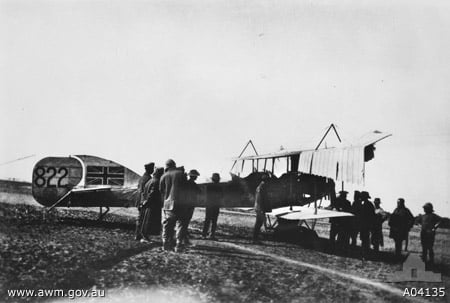
Short S327 Floatplane
Götzen fate and the end of German’s African adventure.
The flotilla returned back home when the following day, Götzen appeared offshore. However Spicer-Simson forbade an attack, pereffering to search for a ship worthy of a duel, and eventually spotted the St George on Stanleyville’s lake, which he had dismantled, carried to Lake Tanganyika and reassembled there, delaying any action to May 1916. Menawhile, a Belgian force managed to capture Kigoma and a British one secured a path toward Bismarckburg. Eventually the flotilla now counting Mimi, Toutou, Fifi and Vengeur arrived off Bismarckburg on 5 June. However the latter having a fort, Spicer-Simson decided to retire to Kituta. Simson would learn afterwards that the guns were in fact dummies, and the Germans managed to escape with a fleet of Dhows. Soon the Belgians received four British Short Type 827 floatplanes and were able to flew reconnaissance missions over the lake. Meanwhile Paul Von Lettow-Vorbeck ordered Zimmer to disarm his ship for the profit of the army, receiving dummies instead. When the Belgians captured Kigoma, the Götzen was driven south of Kigoma Bay to be scuttled on 26 July by a depth of 20 m. Therefore by mid-1916, control of the lake was assured. This would not prevent the war to drag on in East Africa for two more years, Von Lettow-Vorbeck despite having smaller forces maintaining all along a masterfully executed guerilla war, pinning down as expected allied forces far from the home front. But the way the lake was secured remains a story too colorful to ignore.
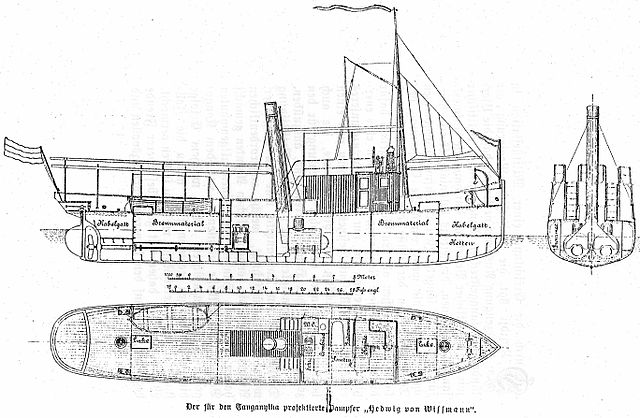
Hedwig Von Wissman
Sources
williamsburglegati.wordpress.com/tag/battle-of-lake-tanganyika/
timescolonist.com/life/islander/our-history-the-strange-battle-of-lake-tanganyika-1.2147580
www.wikiwand.com/en/Battle_for_Lake_Tanganyika
forum.axishistory.com//viewtopic.php?t=181475
en.wikipedia.org/wiki/Battle_for_Lake_Tanganyika
en.wikipedia.org/wiki/Lake_Tanganyika
en.wikipedia.org/wiki/East_African_Campaign_(World_War_I)
Video- Documentary about the events
https://www.youtube.com/watch?v=ARyGQdepY1o

 Latest Facebook Entry -
Latest Facebook Entry -  X(Tweeter) Naval Encyclopedia's deck archive
X(Tweeter) Naval Encyclopedia's deck archive Instagram (@navalencyc)
Instagram (@navalencyc)





 French Navy
French Navy Royal Navy
Royal Navy Russian Navy
Russian Navy Armada Espanola
Armada Espanola Austrian Navy
Austrian Navy K.u.K. Kriegsmarine
K.u.K. Kriegsmarine Dansk Marine
Dansk Marine Nautiko Hellenon
Nautiko Hellenon Koninklije Marine 1870
Koninklije Marine 1870 Marinha do Brasil
Marinha do Brasil Osmanlı Donanması
Osmanlı Donanması Marina Do Peru
Marina Do Peru Marinha do Portugal
Marinha do Portugal Regia Marina 1870
Regia Marina 1870 Nihhon Kaigun 1870
Nihhon Kaigun 1870 Preußische Marine 1870
Preußische Marine 1870 Russkiy Flot 1870
Russkiy Flot 1870 Svenska marinen
Svenska marinen Søværnet
Søværnet Union Navy
Union Navy Confederate Navy
Confederate Navy Armada de Argentina
Armada de Argentina Imperial Chinese Navy
Imperial Chinese Navy Marinha do Portugal
Marinha do Portugal Mexico
Mexico Kaiserliche Marine
Kaiserliche Marine 1898 US Navy
1898 US Navy Sovietskiy Flot
Sovietskiy Flot Royal Canadian Navy
Royal Canadian Navy Royal Australian Navy
Royal Australian Navy RNZN Fleet
RNZN Fleet Chinese Navy 1937
Chinese Navy 1937 Kriegsmarine
Kriegsmarine Chilean Navy
Chilean Navy Danish Navy
Danish Navy Finnish Navy
Finnish Navy Hellenic Navy
Hellenic Navy Polish Navy
Polish Navy Romanian Navy
Romanian Navy Turkish Navy
Turkish Navy Royal Yugoslav Navy
Royal Yugoslav Navy Royal Thai Navy
Royal Thai Navy Minor Navies
Minor Navies Albania
Albania Austria
Austria Belgium
Belgium Columbia
Columbia Costa Rica
Costa Rica Cuba
Cuba Czechoslovakia
Czechoslovakia Dominican Republic
Dominican Republic Haiti
Haiti Hungary
Hungary Honduras
Honduras Estonia
Estonia Iceland
Iceland Eire
Eire Equador
Equador Iran
Iran Iraq
Iraq Latvia
Latvia Liberia
Liberia Lithuania
Lithuania Mandchukuo
Mandchukuo Morocco
Morocco Nicaragua
Nicaragua Persia
Persia San Salvador
San Salvador Sarawak
Sarawak Uruguay
Uruguay Venezuela
Venezuela Zanzibar
Zanzibar Warsaw Pact Navies
Warsaw Pact Navies Bulgaria
Bulgaria Hungary
Hungary

 Bundesmarine
Bundesmarine Dutch Navy
Dutch Navy Hellenic Navy
Hellenic Navy Marina Militare
Marina Militare Yugoslav Navy
Yugoslav Navy Chinese Navy
Chinese Navy Indian Navy
Indian Navy Indonesian Navy
Indonesian Navy JMSDF
JMSDF North Korean Navy
North Korean Navy Pakistani Navy
Pakistani Navy Philippines Navy
Philippines Navy ROKN
ROKN Rep. of Singapore Navy
Rep. of Singapore Navy Taiwanese Navy
Taiwanese Navy IDF Navy
IDF Navy Saudi Navy
Saudi Navy Royal New Zealand Navy
Royal New Zealand Navy Egyptian Navy
Egyptian Navy South African Navy
South African Navy






























 Ukrainian Navy
Ukrainian Navy dbodesign
dbodesign